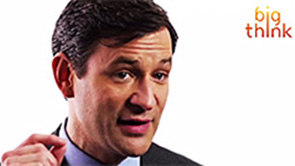Research Article
Meditation and Brainwave Entrainment:
A Powerful Combination
Much has been made of the potential for meditation to make our lives more rewarding and fulfilling. People who meditate on a regular basis generally enjoy less stress, more energy, better health, and an overall feeling of calm and peace. Meditation also helps clear the mind, making way for inspiration, creativity, focus, and clarity of thought.
Like many complementary therapies, the issue most people have about meditation is in its execution. Thanks to the rapid rise of technology in our lives, we seem to be busier than ever. Our minds are occupied during most of the time we are awake, and we only really shut off when we finally go to sleep at night, which means that finding the opportunity to meditate daily can be difficult.
Of course, meditation is actually quite a simple procedure, and one that can be practiced anywhere and at any time. There are no special requirements other than the need to have peace and quiet in a distraction-free environment for a few minutes. The trick is being able to switch off from whatever is going on around you and let your meditative state begin.
Faster Meditation Made Easy.
If time is against you, one way to enjoy the benefits of meditation might be through a shorter meditation experience, such as with the Zen12 meditation sessions, which each last just 12 minutes.
Recordings such as this can include music and sound effects overlaid above special ‘brainwave’ audio that makes meditation more likely. This audio enables brainwave entrainment to take place, where the frequency of sounds and an individual’s brainwaves are encouraged to sync up with each other. For the purposes of meditation, the idea would be to stimulate alpha brainwave activity in the 8-13 Hertz region, a state of relaxed and effortless alertness.This helps achieve deeper results, quicker.
These sessions areusually experienced through headphones, making it easier to shut out distractions and focus quickly. The beauty of such session combinationsis that they take the hard work out of the equation, easing the listener into a state of meditation while he or she simply relaxes and lets the recording do its work.
Similar results have been achieved with the use of music alone, the most famous example being the so-called Mozart effect. In his book "Pourqui Mozart?" Dr. Alfred A. Tomatis claims that the composer’s music promoted healing and brain development[1]. The idea has been further popularized by Don Campbell in his book "The Mozart Effect", which claims that listening to Mozart can temporarily boost a person’s scores on portions of an IQ test [2].
Entrainment Happens Naturally.
This syncing of frequencies is a not a new phenomenon. In fact, it happens within our bodies every minute of every day. Slow down your breathing, for example, and your heart rate and brainwaves slow down to match. The reverse is also true, which means that by slowing down your brainwaves you can affect your heart rate and respiration, thereby inducing the perfect state for effective meditation[3].
Brainwave entrainment through audio can be triggered through a variety of techniques, including binaural beats, isochronic tones, monaural beats, and modified audio tracks. The brainwavetones are embedded into the audio and the listener is unaware of their presence. He or she simply enjoys the audio track as a pleasurable listening experience, while the various tones generate frequencies in a way that encourages the brainwaves to respond and "get in step."
Study after study has shown that brainwave entrainment technology is an effective way to relieve anxiety[4], and that meditation alters brainwave patterns more effectively than regular relaxation [5]. Dr. Jeffrey D. Thompson refers to the "far-reaching possibilities" to be enjoyed by using "this type of vibrational technology" to encourage healing, emotional release, stress reduction, relaxation and, of course, deeper meditation [6].
The power and manifold benefits of meditation are well documented, its practice dating back to prehistory where it was used mainly for religious or spiritual purposes. With our growing knowledge and understanding of the functions of the brain it seems both logical and practical that we should develop ways of tapping into this power and using it to our advantage.
Together these two processes give us the capacity to reach new levels of consciousness that might previously have taken years to achieve. Zen12 sits at the cutting edge of that science.
- Alfred A. Tomatis. Pourquoi Mozart? Diffusion, Hachette (1991)
- Campbell, Don. The Mozart Effect: Tapping the Power of Music to Heal the Body, Strengthen the Mind, and Unlock the Creative Spirit. Quill; Reprint edition (September 18, 2001)
- Campbell, Don. Music: Physician for Times to Come. Quest Books, 2000.
- Helané Wahbeh, Carlo Calabrese, and Heather Zwickey. The Journal of Alternative and Complementary Medicine. January/February 2007, 13(1): 25-32. doi:10.1089/acm.2006.6196.
- Jim Lagopoulos, Jian Xu, Inge Rasmussen, Alexandra Vik, Gin S. Malhi, Carl F. Eliassen, Ingrid E. Arntsen, Jardar G. Sæther, Stig Hollup, Are Holen, Svend Davanger, and Øyvind Ellingsen. The Journal of Alternative and Complementary Medicine. November 2009, 15(11): 1187-1192. doi:10.1089/acm.2009.0113.
- Dr. Jeffrey D. Thompson, D.C., B.F.A. The Clinical Use of Sound. Center for Neuroacoustic Research. October 5, 2009.










